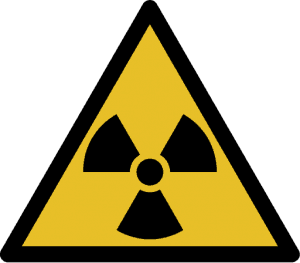Radioactive waste is any waste that contains radioactive material. Radioactive (or nuclear) waste is a by-product from nuclear reactors, fuel processing plants, hospitals, various industrial applications, and research facilities. Radioactive waste is hazardous to most forms of life and the environment and is regulated by government agencies to protect human health and the environment.
Sources of Radioactive Waste
Radioactive waste comes from many sources. Radioactive (or nuclear) waste is a by-product of nuclear reactors, fuel processing plants, hospitals, various industrial applications, and research facilities. Radioactive waste is also naturally occurring radioactive materials (NORM) that can be concentrated due to the processing or consumption of coal, oil, gas, and some minerals.
- Nuclear Fuel Cycle. The nuclear fuel cycle is a process chain consisting of various stages. The nuclear fuel cycle starts with the mining of uranium and ends with the disposal of nuclear waste. Radioactive waste from the front end of the nuclear fuel cycle is usually alpha-emitting waste from the extraction of uranium, and it often contains radium and its decay products. The back end of the nuclear fuel cycle involves managing the spent fuel after irradiation. Spent nuclear fuel is due to the presence of a high amount of radioactive fission fragments and transuranic elements that are very hot and very radioactive.
- Medical Waste. Radiation is used in a variety of medical examinations and treatments. Doses from medical radiation sources are determined by whether a person underwent a treatment or not. In general, radiation exposures from medical diagnostic examinations are low (especially in diagnostic uses). Doses may also be high (only for therapeutic uses). Still, in each case, they must always be justified by the benefits of accurate diagnosis of possible disease conditions or by benefits of accurate treatment. These doses include contributions from medical and dental diagnostic radiology (diagnostic X-rays), clinical nuclear medicine, and radiation therapy. Radioactive medical waste tends to contain beta particles and gamma rays emitters. It can be divided into two main classes. In diagnostic nuclear medicine, many short-lived gamma emitters such as technetium-99m are used. Many of these can be disposed of by leaving them to decay for a short time before disposal as normal waste.
- Industrial Waste. Industrial waste can contain alpha, beta, neutron, or gamma emitters. Gamma emitters are used in many industrial uses, such as radiography, a non-destructive testing method where many types of manufactured components can be examined to verify the internal structure and integrity of the specimen. Neutron emitting sources are used in various applications, such as oil well logging.
- NORM. Naturally occurring radioactive materials (NORM) and Technologically Enhanced Naturally Occurring Radioactive Materials (TENORM) consist of materials, usually industrial wastes or by-products, enriched with radioactive elements found in the environment, such as uranium, thorium, and potassium and any of their decay products, such as radium and radon. For example, coal, a combustible black or brownish-black sedimentary rock, contains a substantial amount of the radioactive elements uranium and thorium. According to the UNSCEAR, the average specific activity of both uranium-238 and thorium-232 in coal is generally around 20 Bq/kg (range 5-300 Bq/kg). Coal mines in Freital, Germany, which have uranium concentrations of 15000 Bq/kg, are an exception. Burning coal gasifies its organic materials, concentrating its inorganic components into the remaining waste, called fly ash. Around 10% of coal is fly ash, and fly ash is hazardous and toxic to human beings and other living things. Fly ash also contains the radioactive elements uranium and thorium, concentrated by a factor of 10.
